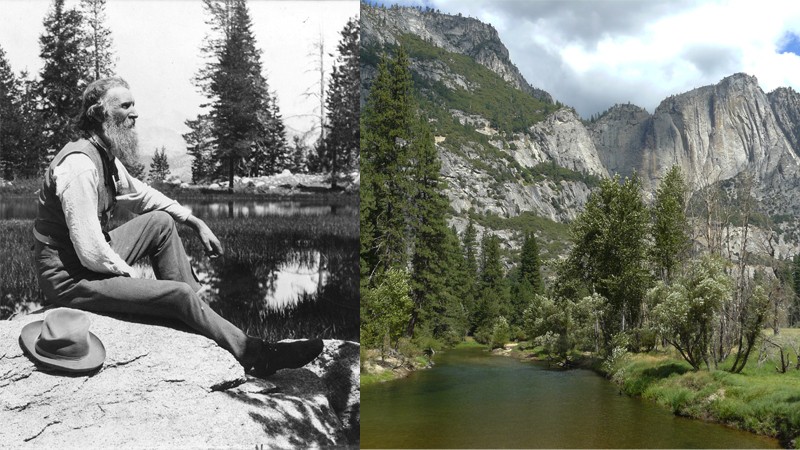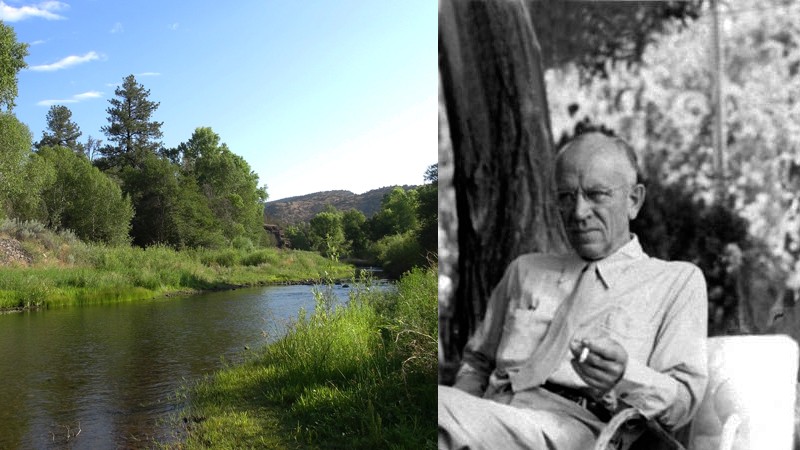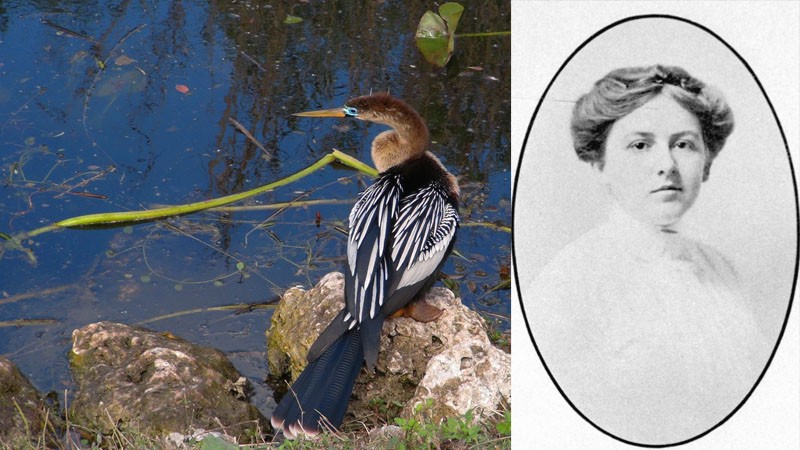A COMMITMENT TO CONSERVATION
Take a Virtual Walk in the Excellence Hall of Fame
The National Park Service was established on August 25, 1916. With over 100 years of existence, it’s good to reflect upon and honor the extraordinary Commitments people have made to create, protect and preserve each of our 400+ park units along with their natural, historical and geological features, and diverse plant, bird and wildlife species.
There are stories of the Commitments made by over 250,000 volunteers who help to keep our parks going – whether it’s helping in a visitor center, guiding a hike, or cleaning up litter. There are the Commitments made by communities and groups who stood together to establish the designation of a new park, monument or heritage area. From budget cuts to pollution and climate change issues, there are hundreds and thousands of people, non-profit organizations and local communities, artists and writers, who continue to stand united in Commitment to protect our wildlife, natural lands, recreational areas and historic sites, all within the National Park Service, as well as our Federal Public Lands, Forests, and National Wildlife Refuges.
As part of The Excellence Effect, a movement to build excellence in the lives of 50 million young people worldwide through the 8 Keys of Excellence, we’re taking a virtual walk down the Excellence Hall of Fame, to reflect upon some of the wise words written and spoken by eight leaders in conservation and preservation, who exemplify the Commitment Key of Excellence!
THEODORE ROOSEVELT (October 27, 1858 – January 6, 1919)
“Of all the questions which can come before this nation, short of the actual preservation of its existence in a great war, there is none which compares in importance with the great central task of leaving this land even a better land for our descendants than it is for us.”
Aptly known as the “conservationist president”, Theodore Roosevelt used his presidential authority to protect wildlife and 230 million acres of public land by creating the US Forest Service and establishing 150 national forests, 51 federal bird reserves, 4 national game preserves, 5 national parks, and 18 national monuments by enabling the 1906 American Antiquities Act. Today, there are 6 national park units dedicated to our conservationist president.
JOHN MUIR (April 21, 1838 – December 24, 1914)
“When we try to pick out anything by itself, we find it hitched to everything else in the Universe.”
Known as “John of the Mountains’” and the “Father of the National Parks”, John Muir was a naturalist, author, writer, environmentalist and strong advocate for the preservation of wilderness. His activism played a major role in the preservation of the Yosemite Valley, Sequoia National Park and many other wilderness and forest areas, and he also petitioned the U.S. Congress for the National Park bill that was passed in 1890, establishing Yosemite National Park. He was also the founder of The Sierra Club.
ALDO LEOPOLD (January 11, 1887 – April 21, 1948)
“Harmony with land is like harmony with a friend; you cannot cherish his right hand and chop off his left.”
The best-selling author of “A Sand County Almanac”, Aldo Leopold was a scientist, ecologist, forester, conservationist and environmentalist. An expert in environmental ethics and in wilderness conservation, he developed the first comprehensive management plan for the Grand Canyon, wrote the Forest Service’s first game and fish handbook, and proposed the Gila Wilderness Area, the first national wilderness area in the Forest Service system. In 1935, he helped found The Wilderness Society.
OLAUS JOHAN MURIE (March 1, 1889 – October 21, 1963)
“We cannot overlook the importance of wild country as source of inspiration, to which we give expression in writing, in poetry, drawing and painting, in mountaineering, or in just being there.”
Known as the “father of modern elk management”, Olaus Murie was an author, naturalist, and wildlife biologist known for practicing a more observational based science and for his wildlife management work regarding predator prey relationships. Together with his wife Mardie Murie, he successfully campaigned to expand Olympic National Park, create Jackson Hole National Monument and the Arctic National Wildlife Refuge. He served as president of The Wilderness Society, The Wildlife Society, and as director of the Izaak Walton League.
ROSALIE BARROW EDGE (November 3, 1877 – November 30, 1962)
“The time to protect a species is while it is still common.”
Rosalie Barrow was a New York socialite and suffragist, as well as an amateur birdwatcher and full-time volunteer conservationist. In 1929 she established the Emergency Conservation Committee, and in 1934 Edge founded Hawk Mountain Sanctuary, the world’s first preserve for birds of prey. She also led grassroots campaigns to create Olympic and Kings Canyon National Parks, and successfully lobbied Congress to purchase 8,000 acres of old-growth sugar pines on the perimeter of Yosemite that were to be logged.
SIGURD F. OLSON (April 4, 1899 – January 13, 1982)
“Wilderness to the people of America is a spiritual necessity, an antidote to the high pressure of modern life, a means of regaining serenity and equilibrium.”
Known as “The Bourgeois” for his trusted leadership, Sigurd F. Olson was an author, wilderness guide, environmentalist and wilderness advocate. He was influential in the protection of the Boundary Waters and helped draft the Wilderness Act of 1964, was president of The Wilderness Society, and helped establish Voyageurs National Park, the Arctic National Wildlife Refuge, and Point Reyes National Seashore. He was also a consultant to the Secretary of the Interior Stewart Udall on wilderness and national park issues.
RACHEL LOUISE CARSON (May 27, 1907 – April 14, 1964)
“Only within the moment of time represented by the present century has one species — man — acquired significant power to alter the nature of the world.”
Best-selling author Rachel Carson was a marine biologist and conservationist whose activism, writing and books, “Silent Spring”, “The Sea Around Us”, “The Edge of the Sea”, and “Under the Sea Wind,” helped to advance the global environmental movement around the world. “Silent Spring” showcased environmental concerns regarding the use of synthetic pesticides and DDT, and inspired a grassroots movement that led to the creation of the Environmental Protection Agency.
MARJORY STONEMAN DOUGLAS: (April 7, 1890 – May 14, 1998)
“It is a woman’s business to be interested in the environment. It’s an extended form of housekeeping.”
Known as “Defender of the Everglades”, Marjory Stoneman Douglas was a journalist and activist who took on the fight for feminism, racial justice, and conservation. As an environmentalist she fought hard against the efforts to drain the Everglades, and reclaim land for development. She is the author of “The Everglades: River of Grass”, and formed the Friends of the Everglades. Everglades National Park has a wilderness area named for in honor of her legacy.













